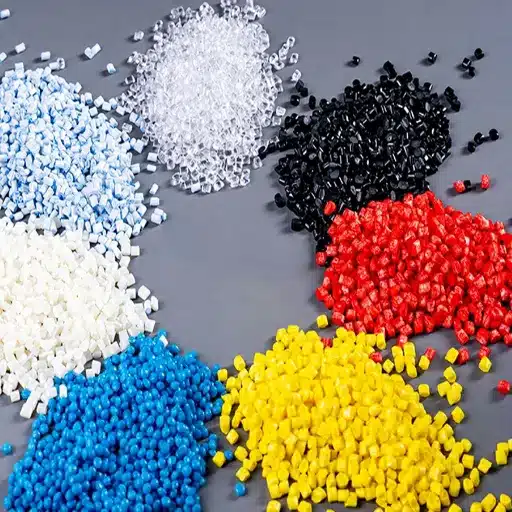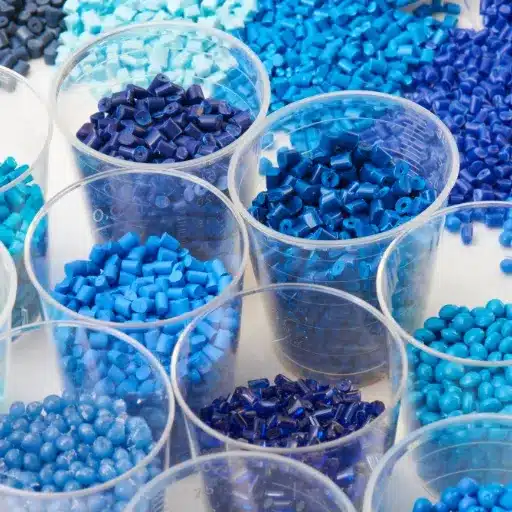Polyphenylene Oxide (PPO) Resins and Polypropylene (PP) are two commonly used thermoplastic polymers that differ in their properties and applications. For plastic engineers and professionals, understanding the differences between these two materials is crucial in making informed decisions about which material to use. This article seeks to differentiate PPO from PP by discussing their chemical composition, mechanical properties, thermodynamic behavior, and functionalities.
What are the Key Properties of PP and PPO?
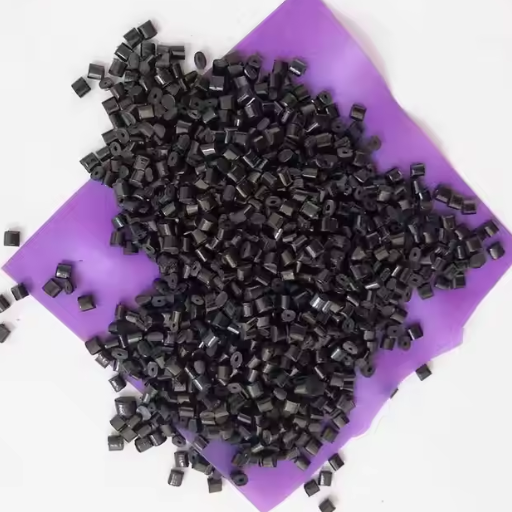
Polypropylene (PP):
- Lightweight: PP is one of the lightest thermoplastics, with a low density that makes it suitable for weight-sensitive applications.
- High Chemical Resistance: It resists a wide range of acids, alkalis, and organic solvents.
- Good Flexibility: PP offers excellent flexibility and can withstand repetitive bending without breaking, making it ideal for applications requiring durability.
- Thermal Stability: It has a moderate melting point (~130°C) and maintains dimensional stability in specific heat environments.
Polyphenylene Oxide (PPO):
- High Heat Resistance: PPO exhibits superior thermal performance, withstanding temperatures up to 200°C without significant degradation.
- Exceptional Dimensional Stability: It retains strong mechanical properties under thermal and mechanical stress.
- Low Moisture Absorption: PPO absorbs minimal moisture, which preserves its strength and electrical properties in humid conditions.
- Flame Resistance: Due to its chemical structure, PPO is inherently flame retardant and suited for safety-critical applications.
These properties make PP ideal for cost-effective, lightweight general-purpose use, while PPO excels in high-performance, heat-resistant environments.
Mechanical Properties of PP vs PPO
Analyzing the mechanical properties of Polypropylene (PP) and Polyphenylene Oxide (PPO) reveals differences that serve distinct operational needs. A semi-crystalline thermoplastic, Polypropylene is distinguished by its superior impact strength and flexible nature. Polypropylene has a tensile strength of 30 to 40 MPa and an elongation at break of 200 to 600%, making it favorable for general-purpose applications with moderate mechanical requirements. Furthermore, PP is known for its ductility and low modulus of elasticity, which ranges from 1 to 1.8 GPa, allowing it to withstand stress.
On the contrary, Polyphenylene Oxide is created for highly demanding conditions that need greater rigidity and structural integrity. PPO has a higher tensile strength, generally in the range of 70-80 MPa, lower elongation at break (1-5%), and increased stiffness, which is highly noticeable, meaning less ductility. Additionally, PPO’s modulus of elasticity ranges from 2.5 to 3.5 GPa, further confirming its suitability for applications that require elements with stability and resistance to deformation under load.
Thermal Properties: How PP and PPO Perform Under Heat
PP (Polypropylene) and PPO (Polyphenylene Oxide) have different thermal characteristics, making each suitable for various applications when exposed to high temperatures. Polypropylene can withstand relatively moderate heat conditions and maintain its structural integrity, as indicated by a melting point of about 130-171°C (266-340°F). Moreover, its thermal conductivity, which ranges from 0.1 to 0.22 W/(m·K), means that PP can serve as an insulator, although it is not ideal at very high temperatures. Nonetheless, the major issue with PP is thermal decomposition, as prolonged exposure to heat and UV light can oxidize the material, weakening it unless stabilizing additives are used.
Polyphenylene Oxide (PPO) is best known for its exceptional heat resistance, with a glass transition temperature (Tg) of around 210 degrees Celsius (410 degrees Fahrenheit) and a melting point higher than that of many other thermoplastic PPO materials. Its low thermal expansion coefficient preserves shape even with constant heating, which is beneficial for harsh environments, such as automotive engines or electric housings. Moreover, the polymer’s inherent flame resistance, without the need for additional chemicals, further enhances its ability to meet strict safety regulations. All these traits together emphasize that selecting the polymer requires more profound thought regarding the temperature variations needed by the environment where the material is used.
Electrical Properties: Comparing PP and PPO
PPO and Polypropylene (PP) are known to have different electrical characteristics that define their usability, setting new boundaries for the types of applications for which they can be used. Since PP is a polymer with low polarity, its electrical insulation properties are remarkable; its dielectric constant, for instance, lies between 2.2 and 2.6 at standard frequencies. Additionally, its significant volumetric resistive properties, combined with a low dielectric loss factor, allow it to be used in cable insulation, capacitors, and other electronic devices where high energy retention is essential.
In contrast, PPO has better electrical performance when the requirements are more stringent. Its low moisture absorption guarantees dielectric stability even in highly humid conditions, which is critical for systems with prolonged structural dependability. PPO’s dielectric constant is usually between 2.5 and 2.7. At the same time, its other favorable characteristics, such as arc resistance and electrical strength, render it particularly applicable for high-voltage insulation systems and components subjected to severe operating conditions.
What Are the Main Applications of PP and PPO?
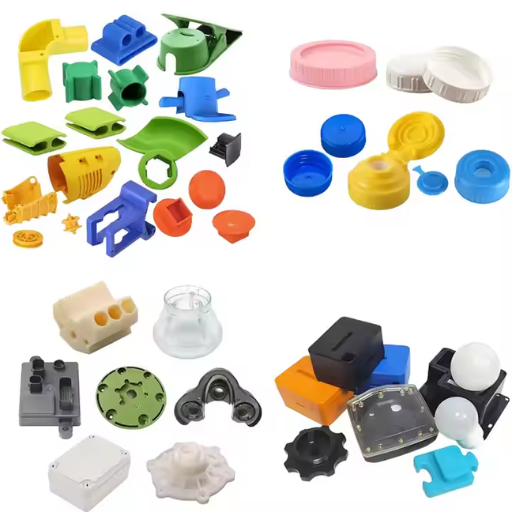
Polypropylene (PP) is used in packaging, consumer goods, and automotive parts due to its low weight, flexibility, and resistance to corrosive chemicals. Polypropylene also has medical applications because it is sterile and durable.
Unlike PP, Polyphenylene Oxide (PPO) is used in electrical and electronic components, such as connectors and housings, due to its exceptional thermal stability and insulating properties. PPO can also be applied in fluid handling systems and structural parts that require high strength and stability while maintaining their original shapes.
Common Uses of PP in Various Industries
Polypropylene (PP) is one of the most widely used thermoplastic polymers due to its lightweight, cost-effective characteristics, and durability. It plays a critical role across multiple industries, which makes it versatile. In packaging, PP is commonly used to create rigid containers and storage places that require flexible films for food, as it provides a moisture barrier and is inert. In the automotive industry, PP is also used in making bumpers, dashboards, and interior trims because it is impact-resistant and very durable under varying temperatures. Furthermore, PP is of great importance in textiles, especially nonwoven fabrics like diapers, surgical masks, and geotextiles, because it is lightweight and has high tensile strength. Due to enduring stresses like autoclaving, PP is also widely used in medical applications such as syringes, lab equipment, and sterilizable containers, proving its usefulness in long-term service conditions. This marks essential strides in augmenting industrial productivity by signifying PP’s structural adaptability.
Applications of PPO in Engineering Plastics
Polyphenylene Oxide (PPO) is used in plastic engineering because it is powerful and has high dimensional stability, low moisture absorption, and low thermal expansion. These properties make PPO useful in electrical, automotive, and fluid handling applications. For example, in the electrical industry, PPO is used to make connectors, enclosures, and other insulating parts because of its dielectric strength and resistance to hydrolytic degradation.
In automotive applications, PPO is used to make lightweight, heat-resistant parts such as grilles, instrument panels, and under-hood components. This improves fuel efficiency and makes cars more durable. PPO is also blended with Polystyrene (PS) or other polymers to enhance processability while maintaining excellent mechanical properties. On the other hand, PPO’s resistance to chemicals and high temperatures makes it ideal for use in handling fluids for pumps, valves, and manifolds that need to withstand harsh conditions.
How PP and PPO Are Used in Electronics
The electronics industry benefits from the unique characteristics of Polypropylene (PP) and Polyphenylene Oxide (PPO) due to their impact on performance, reliability, and manufacturing efficiency. PP is known for its moisture resistance and excellent dielectric properties. These qualities make it suitable for use in capacitor films, cable insulation, and even the enclosures of electronic devices. Moreover, the high-frequency durability of PP, along with its electrical insulation properties, makes it essential in circuits that require precision and low energy consumption.
On the other hand, PPO has an edge in applications where thermal and flame retardant stability is needed. As a result, it is often used as a base material in printed circuit boards (PCBs) and connectors for development devices used in high-temperature conditions. Its low dielectric constant enhances signal integrity in communication systems. Thus, it is preferred for PPO in data transmission and networking equipment. Furthermore, the high structural rigidity of PPO ensures housing for electronics and modules, such as sensors, remains durable.
The combination of PP and PPO offers electronic manufacturers the capability to design sophisticated components that will fulfill the expectations of current technology, including the need for increased device energy efficiency, enhanced durability, and further miniaturization. Such improvements help industries such as consumer electronics, automotive electronics, and telecommunications.
How Do the Mechanical and Thermal Properties Compare?
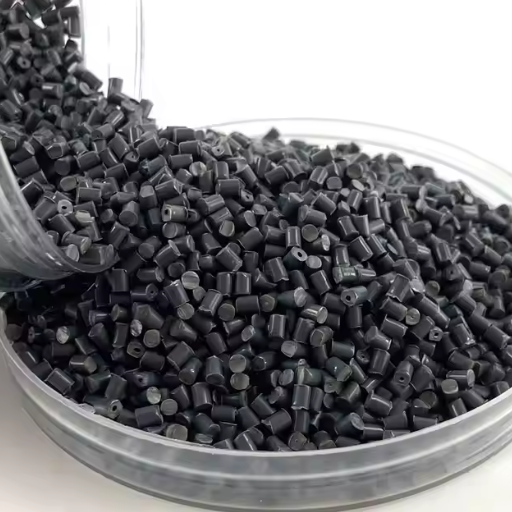
PP and PPO have distinctive properties that make each of them useful for different applications. PP is flexible and has high impact resistance, making it excel in dynamic or high-impact settings, but it has moderate heat resistance compared to PPO. Conversely, PPO is thermally stable, showing high rigidity, and is suited for high-temperature applications. While PP is the more economical and lighter option, PPO has better stability and durability against thermal stress. These traits are used to optimize both substances according to the required performance.
Impact Strength and Dimensional Stability of PP and PPO
Polypropylene (PP) has a moderate impact strength that varies with changes in temperature. Its best performance is in mid-range temperatures, as it is highly prone to low-temperature brittleness. However, impact modifiers can be included to improve PP’s performance and meet application requirements, such as in automotive parts and other consumer products that require better resistance to mechanical stress.
Structural integrity analysis reveals that Polyphenylene Oxide (PPO) has excellent impact resistance and even better dimensional stability when compared to other materials in varying temperatures. Due to its specific rigidity and structural integrity, it can be trusted in high-precision industries such as electronics, aerospace, and aviation, where housing components are subjected to mechanical stress. Also, due to its molecular structure, PPO absorbs less water than PP, which maintains its stability even in very humid conditions.
Heat Resistance: Which Material Performs Better?
When it comes to heat resistance, it is clear that PPO outperforms PP due to having a higher glass transition temperature and thermal deformation resistance. Unlike PP, which has a versatile polymer structure, PPO outperforms it, maintaining its structural integrity at over 200°C. This makes it much easier to use for materials that need sustained exposure to heat. Furthermore, PPO’s low coefficient of thermal expansion strengthens its case for use in precise electronics or automotive parts, as the industry requires fine-toleranced components. Due to its dimensional stability, these factors make it clear that PPO is better suited for applications demanding thermal resistance. In comparison, PP is a cost-efficient polymer, better used for moderate temperatures due to its low melting point of 130-170°C.
Long-Term Aging and Durability of PP and PPO
The aging and durability of the polymers have a critical impact on how PP and PPO perform in their multiplex applications. Polypropylene is known for its low resistance to oxidative degradation, especially when exposed to UV light and higher temperatures. These two mechanical factors lead to degradations such as tensile strength and impact resistance. These changes can be controlled and improved by blending with stabilizers and antioxidants. Still, even then, they don’t mitigate the harsher environment PP is exposed to during long-term use compared to PPO.
The reason why PPO has better long-term aging characteristics is due solely to its thermal stability and oxidative stability. PPO’s molecular structure resists degradation at high temperatures and in oxidative environments, which prolongs the performance of electrical components and makes it suitable for use in automobile parts. In contrast to PP, PPO’s low susceptibility to hydrolysis and chemical attack makes it structurally sound in moist or chemically corrosive environments, posing no threat of stress cracking like PP.
PPO’s endurance under intense thermal cycling and excessive use in high-temperature settings maintains its dimensional stability and mechanical properties. This certifies PPO’s suitability for long-term use in severe stress environments, while remaining highly reliable. This is the primary reasoning behind preferring PPO over other polymers for long-term use. Polypropylene, on the other hand, is far more suitable for medium to low-intensity workloads, but fails aging tests reliably without substantial modification.
What Is the Production Process for PP and PPO?
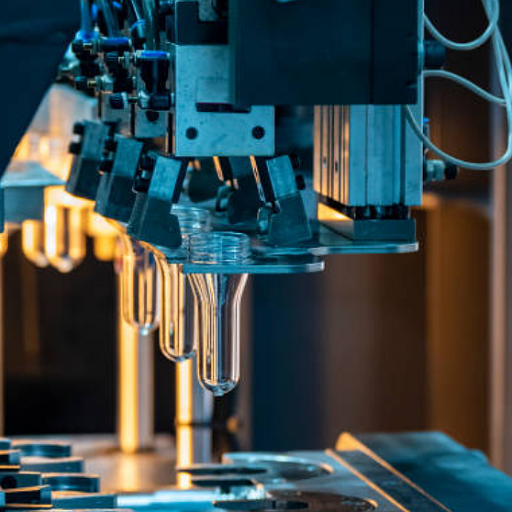
Polypropylene (PP): PP is manufactured by polymerizing propylene gas in the presence of a catalyst, such as a Ziegler-Natta or metallocene catalyst. This polymerization occurs at controlled temperature and pressure in reactors. The polymer is later purified, stabilized, and pelletized for use in other downstream manufacturing processes.
Polyphenylene Oxide (PPO) is produced using oxidative coupling methods of 2,6-dimethylphenols, which copper catalyzes. The reaction is carried out within a solvent for greater precision and uniformity. The polymer produced is afterwards processed and compounded, often with polystyrene or other materials for commercial merit.
Manufacturing Processes: Injection Molding vs Extrusion
Extrusion and injection molding are two vital steps in the final fabrication of a polymer product, which have different purposes depending on the characteristics of the final product and the material.
Injection molding is most suitable for producing complex three-dimensional shapes with high accuracy. The process consists of melting polymer pellets and injecting the polymer into a steel or aluminum mold under high pressure. This method is highly suited for complex designs with tight tolerances, such as those found in automotive parts, medical devices, and consumer products. Moreover, modern advancements in injection molding, including multi-material molds and dynamic temperature control, have improved efficiency and reduced cycle times. Also, injection molding is scalable, making it possible to produce large quantities at low costs.
Extrusion: This method is used predominantly to make continuous and homogeneous cross-sectional contours, such as pipes, sheets, and films. In this technique, the polymer is melted and forced through a die of the desired cross-section. Throughput and dimensional precision in extrusion have greatly improved due to advancements in screw design and die engineering. Also, co-extrusion technology has allowed the combination of two or more materials into a single product, resulting in composite materials with desired properties, such as improved barrier performance or resistance to UV light.
In summary, the primary considerations for deciding between injection molding and extrusion are the part’s geometry, the materials required, and the production volume. Each technique has its pros and cons in the areas in which it specializes.
Polymerization Techniques for PP and PPO
The production of polypropylene (PP) is typically accomplished through catalytic polymerization of propylene. Ziegler-Natta or metallocene catalysts are used most frequently, as they permit high stereoregularity and control over polymer configurations, including isotactic, syndiotactic, or atactic. The catalyst system selected yields specific polymer characteristics, such as molecular weight distribution, crystallinity, and mechanical properties, which enable customization of PP for particular applications. Due to their effectiveness, scalability, and reduced environmental hazard, advanced gas-phase and bulk polymerization methods dominate industrial production.
Polyphenylene oxide (PPO) is produced by oxidative coupling polymerization. The 2,6-dimethylphenol compound is transformed into a polymer using copper amine complex catalysts, resulting in a product that exhibits excellent stability and heat resistance. While Pope exhibits great mechanical and thermal qualities, the blend of PS is often added due to PPO’s brittleness to expand its usability. Such blends, like Noryl™, leverage the volume of polystyrene and integrate it with PPO, which contributes superior dimensional stability and flame resistance.
How Material Properties Are Affected by Production Methods
The production methods of polymers like polypropylene (PP) and polyphenylene oxide (PPO) are crucial in defining their material properties. For instance, polymerization conditions, including temperature, pressure, and catalyst choice, have a substantial impact on the molecular weight, crystallinity, and topology of the polymer chains. The materials’ crystallinity can be further enhanced by optimizing processing parameters, which improves the stiffness, tensile strength, and thermal stability of the materials, enabling their use in high-performance applications.
Controlled radical polymerization and other advanced methods provide precise control over the distribution of molecular weight and the positioning of functional groups, thus mechanically and chemically tailoring the polymers’ resistance. Moreover, the invention of highly selective single-site catalysts leads to the production of more transparent, impact-resistant, and easily processed polymers with a uniform structure.
Compounding and annealing are secondary processes that alter the properties of the final polymer. Compounding adds or modifies specific components, such as stabilizers, flame retardants, or other materials, to make the end product more durable or resistant to environmental changes. Dimensional stability is improved with the use of annealing, which diminishes internal stresses and makes the finished product more dependable for complex designs.
The move towards “green” manufacturing processes, such as using bio-based monomers and recycling technologies, already affects material properties. These methods have some degree of variation in polymer structural uniformity, but they aim to maintain essential properties while minimizing environmental impact. Industries are increasingly adopting advanced production techniques that enable them to modify the properties of materials to achieve specific performance and sustainability requirements.
How Do PP and PPO Blend with Other Materials?
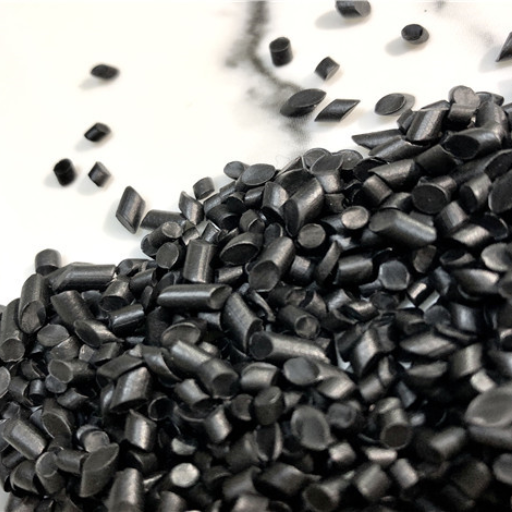
While Polypropylene (PP) and Polyphenylene Oxide (PPO) can be used alone, blending them with other polymers increases their impact strength, heat resistance, or chemical stability. For instance, PP is combined with fillers and polyethylene, while PPO is mixed with polystyrene and polyamides. These blends are tailored for compatibility to ensure that balance is maintained for spillover performance across automotive parts, electronics, and consumer goods. The need to adapt to modern industry stretches the scope of blendability for these polymers without compromising their structural integrity.
Mixing PPO with Other Thermoplastics
When blended with other high-performance thermoplastics, PPO exhibits enhanced thermal stability, dimensional integrity, and chemical resistance. Incorporating polypheylene sulfide (PPS) into PPO is beneficial due to its superior performance at elevated temperatures, exceptional resistance to aggressive chemical environments, and its ability to meet the overall mechanical demands of automotive or industrial applications.
Likewise, the introduction of polyethylene terephthalate (PET) with PPO increases both the strength of the resulting compound and its fitness for precision-molded parts. These blends, in particular, are often used in structural engineering components with high tolerances and those designed to perform reliably under heavy mechanical loads. Some studies suggest that controlling the blending parameters can alleviate difficulties stemming from phase separation for some material property uniformity issues.
Creating Blends for Improved Material Performance
Another example includes newer methods in polymer blending, which enable the creation of high-functioning multi-performance materials. One such example is the use of compatibilizers, such as block copolymers or reactive additives, to assist in the blending phase. This results in stronger interfaces, which increases the materials’ mechanical properties, alongside their thermal and chemical resilience. In some PPO blends, the introduction of grafted maleic anhydride polymers is reported to improve their tensile strength significantly.
As a new approach, the use of carbon nanotubes, graphene, or silica nanoparticles as reinforcements at the nanoscale level is gaining traction. These nano-additives are capable of enhancing not only the mechanical behavior but also the conductivity and thermal management of the blends, thus permitting their application in more challenging environments. Advances in extrusion and reactive processing techniques enable the uniform dispersion of such fillers, ensuring the composite has the desired material properties.
Compatibility of PP with Other Polymers
Based on its molecular structure and the relationships between its components, polypropylene (PP) exhibits varying degrees of compatibility with other polymers. For example, the chemical structures of PP and polyethylene (PE), as well as exceptionally high-density polyethylene (HDPE), make them highly compatible. In polymer blends, this compatibility is harnessed to improve the material’s impact resistance, toughness, and processability while maintaining its stiffness mostly unchanged.
The blending of polar polymers, such as polyamide (PA) or polyethylene terephthalate (PET), with PP is often problematic due to the low miscibility resulting from the differences in polarity. Nonetheless, compatibilizers, such as maleic anhydride grafted polypropylene (MA-g-PP), are widely known in these systems to improve interfacial bonding. These compatibilizers improve mechanical properties, including tensile strength and stability, by strengthening bonds across the interface.
What Are the Cost Implications of Using PP and PPO?
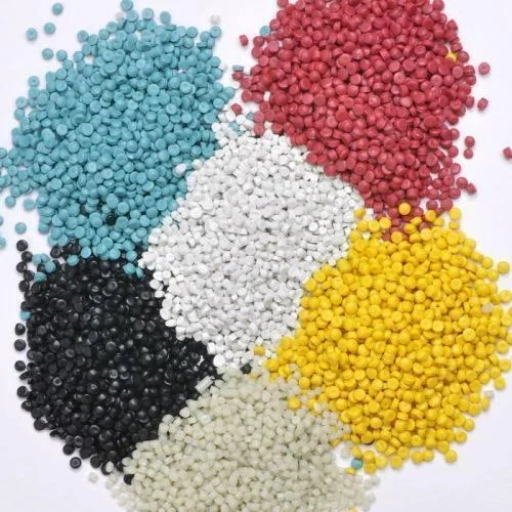
The financial consequences of employing PP and PPO differ in terms of material processing, application needs, and market supply. Due to its widespread availability, PP is generally less expensive than PPO. Because it is cost efficient, its more straightforward manufacturing process and materials drive its demand in many applications. In contrast, PPO’s more expensive costs stem from its having better thermal and mechanical properties and a complex production process. Although BPA performs better in high-strain areas, its elevated costs limit its application to harsh, specialized areas where strong commitment, affordability, longevity, and high durability are needed.
Cost-Effectiveness of PP vs PPO in Manufacturing
When looking at PP and PPO from the footprint perspective, aspects such as energy spent in production, recyclability, and overall lifecycle performance are critical considerations. Due to its easy and energy-efficient extraction processes, PP is known to contribute less to the greenhouse effect through the use of fossil fuel energy. Along with its high potential for being recast into new forms, fracture waste is less when using PP, which adds to its ecological efficiency.
PPO provides superior mechanical and thermal stability compared to PP. However, recyclability becomes an issue due to its chemical structure and performance additives. Furthermore, the production processes for PPO require more energy, which may increase its environmental impact compared to PP. Because of these considerations, PP becomes more appealing to eco-aware manufacturers, particularly in high-volume, cost-sensitive production runs that need to optimize both expenses and environmental impact.
Market Trends for PP and PPO
The global demand for PP (Polypropylene) and PPO (Polyphenylene Oxide) has different driving forces like industrial growth, sustainability efforts, and changing demand for specific applications. Cost-effective PP maintains its mark in packaging, the automotive industry, and consumer goods due to its versatility and recyclability. Its strength and light weight support the growing concern for reduced material use and energy consumption in transportation and logistics.
On the other hand, an increase in adoption of PPO is noted in the electrical and electronics sectors due to its superior thermal and size stability. The increasing dominance of innovative technologies and electric vehicles is further advancing the use of PPO in specialized applications, thanks to innovations in high-performance engineering plastics. Despite these trends, its use remains restricted to situations that require enhanced mechanical and thermal properties due to PPO’s high manufacturing cost.
Investment Considerations for Businesses Using PP and PPO
When analyzing investments in PP (Polypropylene) and PPO (Polyphenylene Oxide), companies consider both economic factors and the specifics of the materials to comply with industry and regulatory requirements. PP remains attractive for the packaging, automotive, and textile industries due to its low weight, recyclability, and cost. Research suggests that there is an increasing demand, particularly with the global shift towards sustainable and energy-efficient alternatives, as innovations in PP align with circular economy principles.
On the other hand, PPO’s superior thermal stability, dimensional retention, and flame-retardant attributes make it stand out in highly demanding markets like electronics and electrical equipment. Therefore, its production and processing costs are on the higher side, restricting market adoption to niche, high-value markets. Other companies may want to consider new bio-based, sustainably aligned technology advances in PPOs, which are challenging from a cost-risk perspective.
Strategic investment needs to concentrate on lifecycle assessment, scalability, and compliance with provisions of environmental legislation that are in an advanced stage of development. Regions like Asia-Pacific’s emerging industrial centers, as well as the European Union’s initiatives toward green manufacturing, provide additional partnership opportunities that advanced material position vendors could utilize. Altering supply chains to address volatility in raw material costs remains one of the most critical elements for optimizing returns in the PP and PPO markets.
Reference Sources
-
Structure and Properties of PPO/PP Blends Compatibilized by Triblock Copolymer SEBS and SEPS
- Key Findings: This study explored the blending of isotactic polypropylene (iPP) and PPO. Without compatibilizers, large PPO particle sizes and delamination were observed, but the fracture toughness was higher than that of either pure iPP or PPO. Adding triblock copolymers (SEBS and SEPS) significantly improved the dispersion of PPO particles and interfacial adhesion.
- Methodology: The research involved mechanical testing and morphological analysis of iPP/PPO blends with and without compatibilizers.
-
- Key Findings: The study focused on the mechanical properties of PP composites, highlighting the role of crystallinity in enhancing tensile modulus and strength. While this study primarily focused on PP, it provides insights into its mechanical behavior in composite systems.
- Methodology: Tensile and impact properties were evaluated, and scanning electron microscopy (SEM) was used to analyze stress concentration points.
-
Revisiting the Advancements in Plant Polyphenol Oxidases Research
- Key Findings: This paper is unrelated to the comparison of PP and PPO, as it focuses on polyphenol oxidases in plants, discussing their enzymatic properties and roles in stress responses.
- Top PPO Plastic Pellets Suppliers in China
Frequently Asked Questions
Q: What is the main chemical difference between PP and PPO?
A: The primary chemical difference between PP (polypropylene) and PPO (polyphenylene oxide) lies in their molecular structure. PPO is a polyphenylene ether that includes additional oxygen atoms in its structure, enhancing its thermal and oxidative stability compared to polypropylene (PP).
Q: How do the thermal properties of PPO compare to those of PP?
A: PPO exhibits excellent heat resistance, allowing it to maintain its properties at higher temperatures compared to PP, which has a lower melting point and thermal stability. This makes PPO suitable for high-performance applications that involve elevated temperatures.
Q: What is Noryl and how is it related to PPO?
A: Noryl is a brand name for a blend of PPO and polystyrene, developed by SABIC Innovative Plastics. This material combines the excellent dimensional stability and high impact strength of PPO with the processability of polystyrene, making it ideal for various applications, including electrical equipment.
Q: Can PPO be modified for better performance?
A: Yes, PPO can be modified to enhance its properties. For instance, it can be blended with other polymers or additives to improve its impact resistance, processability, or even to enhance its water resistance, making it versatile for different applications.
Q: What applications benefit from using PPO instead of PP?
A: Applications that require high heat resistance, excellent electrical insulation, and durability, such as automotive components, electrical equipment, and hot water systems, benefit from using PPO over PP due to its superior material properties.
Q: How does the absorption of water differ between PP and PPO?
A: PPO generally has lower water absorption compared to PP, which can be advantageous in applications where moisture resistance is critical. This property helps maintain the integrity and performance of PPO in humid environments.
Q: Are there any specific household applications where PPO is preferred over PP?
A: Yes, PPO is often preferred in household applications such as appliances and plumbing fixtures where high-performance materials are needed. Its excellent dimensional stability and water resistance make it suitable for these environments.
Q: What are the environmental considerations when using PPO and PP?
A: Both PPO and PP are recyclable, but the recycling processes and end-of-life impacts may differ. It’s essential to consider the specific recycling capabilities of the material in your region and the environmental impact of the chemical processes involved in its production.
Q: What are the key performance characteristics of PPO compared to PP?
A: Key performance characteristics of PPO include high heat resistance, excellent dimensional stability, and superior oxidative stability compared to PP. These attributes make PPO a high-performance material suitable for demanding applications.
Q: How does the cost of PPO compare to that of PP?
A: Generally, PPO is more expensive than PP due to its complex manufacturing process and enhanced performance characteristics. However, the long-term benefits in specific applications may justify the higher cost of PPO.

